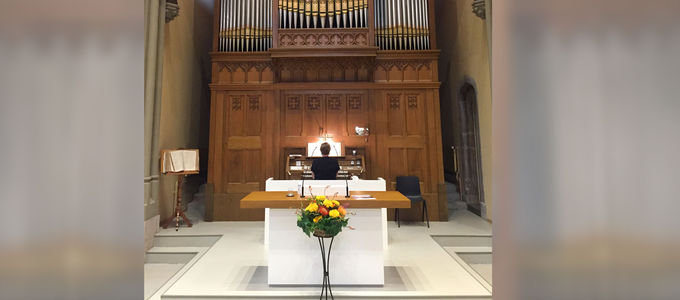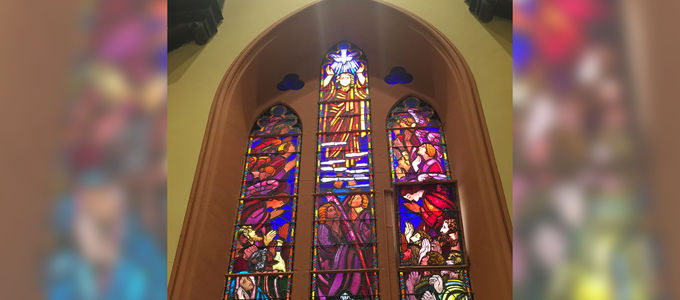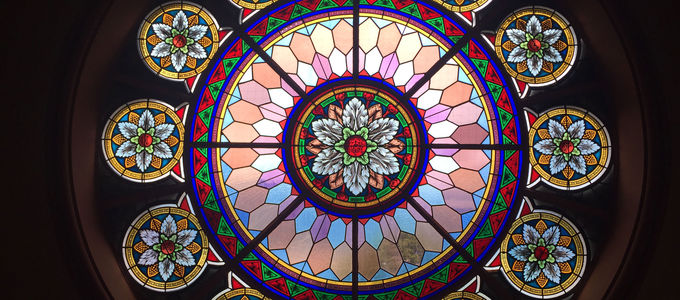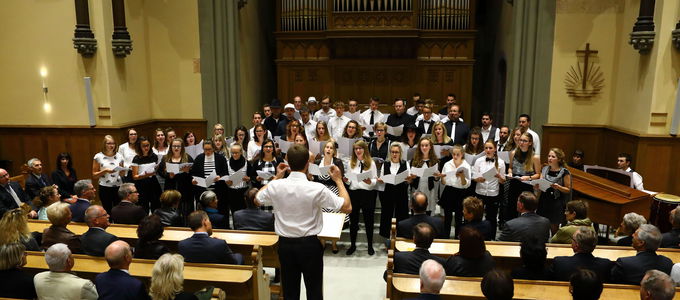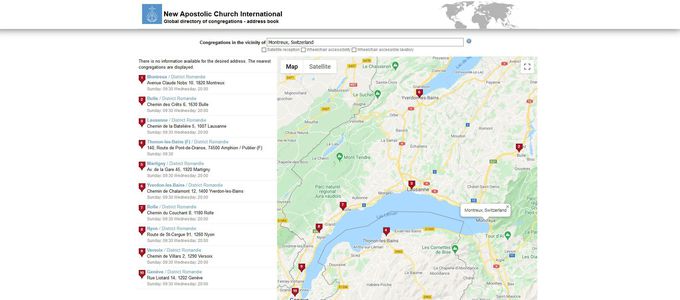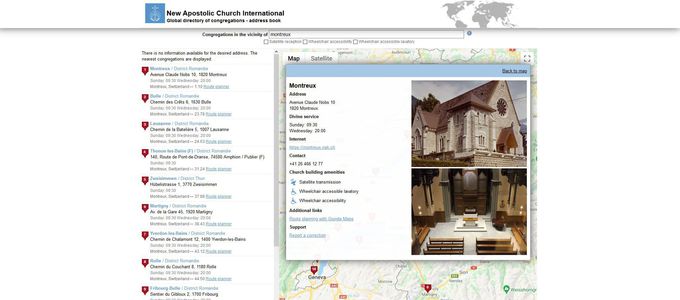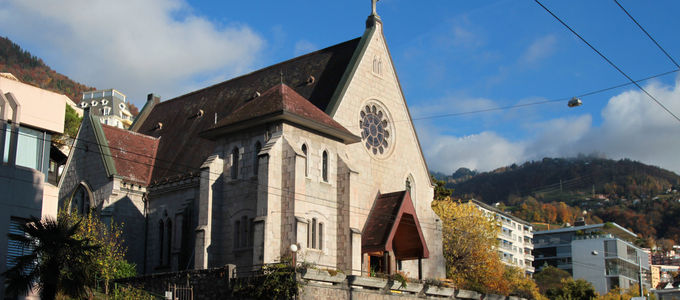
The English were not only the first to conquer Swiss mountain peaks, but also built churches in the Alpine region on their trips abroad. One of these is today in the possession of the New Apostolic congregation in Montreux.
Situated only four kilometres from Chillon Castle, right on the shores of Lake Geneva, and in the heart of the Swiss mountains, the church in Montreux has quite a prominent location. The alpine holiday region receives a lot of visitors, and the local congregation also benefits from this again and again. “While they are on vacation, we receive regular visits from brothers and sisters from neighbouring countries,” relates the congregation’s previous rector Paul Droz. And the thing that most amazes our guests is the church building and its well-preserved original inventory, which dates from the nineteenth century.
Resort guests, athletes, and architects from England
“Travels through the most remarkable regions of Helvetia” was the caption of a 1778 publication about Switzerland, written by Gottlieb Siegmund Grinner in London, England. A few years later, at the start of the nineteenth century, English botanists and geologists travelled through the alpine country in order to explore the mountain area for themselves. They were followed shortly thereafter by British tourists and athletes. And so it was also an Englishman who first conquered the 4478-metre Matterhorn peak, one of the highest mountains in the Alps, in 1865.
It was at about the same time as the beginnings of English tourism in the Alpine region that the first English churches were established in Switzerland: the vacationers wanted to be able to celebrate their divine services here too. It was in Zermatt that they assembled for the first English service in 1858, and twelve years later, in 1870, the first Anglican Church in Switzerland was built. Other such church buildings were constructed in Grindelwald, Pontresina, and Chamonix—and it was no coincidence that all of these were popular health resorts.
Built, abandoned, and back in use
The city of Montreux is located only 70 kilometres from the Matterhorn. It is a health resort in Southwestern Switzerland which today is home to some 25,000 inhabitants. In 1875, an unknown architect erected an Anglican Church directly on the shore of the lake by commission of the Ecclesiological Society. There were barely 3,000 people living in Montreux at the time.
After the Second World War, the stream of vacationers from Great Britain began to diminish, and in 1965, the Anglican “Christ Church” ultimately closed its doors. The New Apostolic Church then expressed an interest in purchasing the building, and on 22 December 1975 Apostle Hermann Hänni signed the purchase agreement.
However, the New Apostolic congregation needed more space. For this reason, the new owners drew up some plans and applied for a building permit. After a lengthy process, which included examinations by experts in the protection of historical monuments, they ultimately received a permit to construct the adjacent rooms. On 13 May 1979 Chief Apostle Hans Urwyler dedicated the renovated church. After 14 years, believers were once again celebrating divine services in the 100-year-old church.
A total of 940 pipes — including 36 that do not make a sound
A large pipe organ adorns—and fills—the interior of the church. The mighty organ case consists of 940 pipes. One hundred twenty pipes are connected to the pedals, another 392 belong to the first manual, and another 392 are connected to the second manual. Today there are 36 pipes that are no longer active. They are among the 51 pipes of the original organ case.
A recognisable English building era
In the year 2011, the congregations of Montreux and Vevey amalgamated with the objective of celebrating divine services together in Montreux from then on. As a result of this amalgamation—which took place 140 years after the original construction of the church—the building was thoroughly “renovated and adapted to today’s needs”, explains the New Apostolic Church Switzerland. After three years of construction time, the new congregation of Montreux was able to move back into the renovated church on 8 March 2015. A total of 180 people took part in the dedication service conducted by District Apostle Markus Fehlbaum in the venerable building.
The congregation’s chronicle states: “The floor plan of our church outlines a simple hall with a transept, a retracted, rectangular choir, and an asymmetrical tower position.” The preference for complicating the floor plan—for example, with the placement of the sacristy between the transept and the choir, and the protruding side entrance—is also of typical English design in the period. The exterior wall design with its exposed brickwork and the straight choir closure are also characteristic of this English building era.
Monument and church building
The neo-Gothic building with a cross floorplan is part of the cantonal heritage of Vaud, and is therefore a monument of regional interest. This is especially due to the colourful artwork found in the stained glass windows.
Six Priests and six Deacons are responsible for the pastoral care of the congregation. Some 160 members gather here for divine services: and they still sit in the original church pews, from where they can admire the beautiful church ceiling and nineteenth-century woodwork that adorns the interior. Even the windows, which depict historical paintings, have been preserved in their original state.
But the church is not only admired by the members of the Montreux congregation and the regular vacationers who come to visit. Every now and then, a Chief Apostle will visit the church too, as was most recently the case in October 2016, when Chief Apostle Jean-Luc Schneider gathered with the choir and members at 10 Avenue Claude Nobs for a concert.








